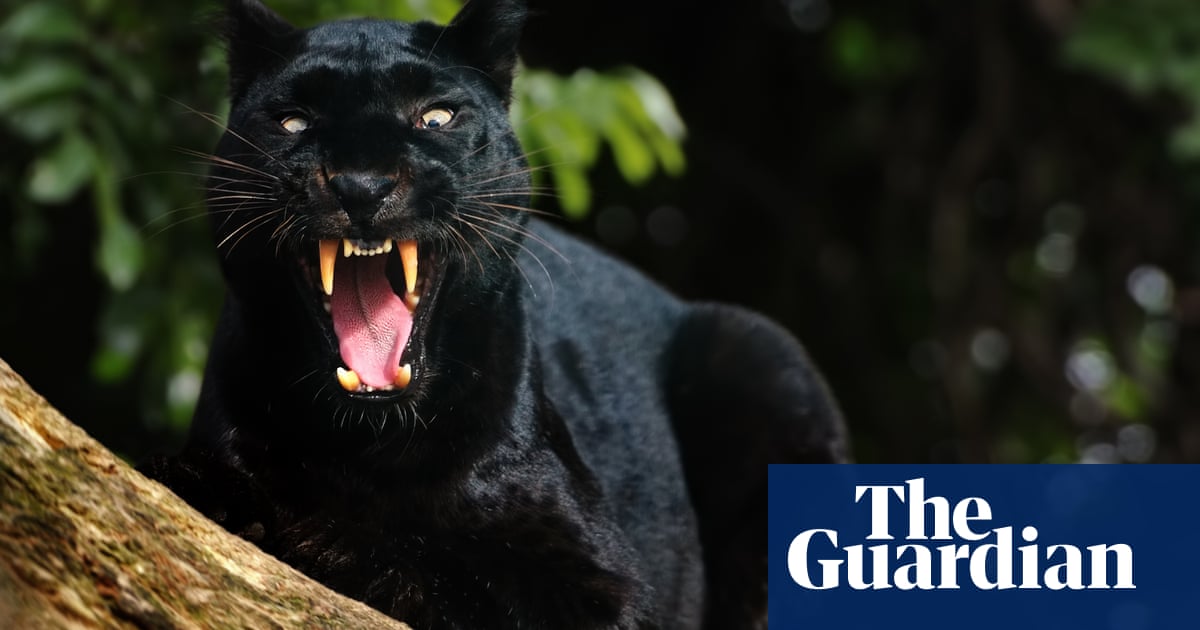When you think of four-legged British wildlife, the first animal that comes to mind may not be a black leopard.
Yet that is exactly what Sharon Larkin-Snowden insists she has seen roaming the Cumbrian countryside over the past few months. The 52-year-old part-time construction worker was first told about alleged sightings of the so-called Beast of Cumbria in November, when local farmers noticed “unusual activity” on their land. But it wasn’t until later in the month that she claims to have had her own sighting.
She stumbled upon the carcass of a sheep, which looked “different to how sheep are killed by fox or other predators”.
“It looked freshly killed,” she said. “I videoed myself walking around the local area to look for the cat in case it was still around. I wanted to cover myself in case something happened, God forbid. I took photos and went back to the car and then when I turned around the corner I saw something out of the corner of my eye.
“I thought it was a dog, and it took a few seconds for my brain to realise it wasn’t a dog, it was a big cat. It was a leopard. It must have heard me coming toward the sheep and then ran away.”
Since then Larkin-Snowden has been tracking the cat’s movements every day, responding to calls from local farmers who report similar sightings. She regularly updates a Facebook group called Big Cats in Cumbria, which has posts from others who claim to have made sightings.
…
Minter’s theory is that the cats are discarded military mascots or illegally traded wildlife released into the wild. One common explanation is that in the wake of the Dangerous Wild Animals Act 1976, people who had been keeping big cats as exotic pets illegally discarded them – thus starting a wild population in the UK.
Dr Egil Dröge of Oxford University dismisses the theory out of hand. “Maybe a few were set free with the 1976 legislation, but there sure aren’t any roaming around right now and breeding,” he said.
He is critical of Larkin-Snowden’s claim that a beast is killing sheep in Cumbria, and of the idea that big cats are roaming around freely in the UK.
Shown her picture of a mauled sheep, he said: “The carcass shown in the pictures isn’t touched by a big cat, let alone one with a large cub. All ribs are intact, and the carcass is picked clean, even by insects. You’d never see that with the kills of big cats.”
He argues that it would be easy to tell if big cats were in the UK countryside, as the impact would be larger than a handful of sheep carcasses. “If a big cat would roam in England, you’d expect to see clusters of sheep kills. A big cat in a confined space, like a field, with sheep, very quickly would lead to many of those sheep being dead. That wouldn’t go unnoticed.”
A Department for Environment Food and Rural Affairs spokesperson said: “There has been no credible evidence of wild living big cats presented to Natural England, dating back to the 1990s. For example, the Beast of Bodmin case in the 1990s involved a detailed investigation of sightings and found no evidence.”
Prof Andrew Hemmings of the Royal Agricultural University isn’t so quick to dismiss the reported sightings from the likes of Larkin-Snowden and Minter. “In my own opinion I do think they’re out there,” he said.
For the last nine years, he’s been carrying out research in the field. He said: “Here at the RAU, we analyse bone fragments and skeletal remnants from prey species, primarily deer, that have been taken from areas where there’s been reported sightings of big cats in the past. We look at the spacing parameters of tooth marks … to measure the spacing between the tooth pits, and the size of the tooth pits themselves.
“I’ve done around 250 samples in the lab, and have a further 80 or so left to analyse, and some of the [evidence is] stacking up in favour of a medium to large size feline. This analysis alone will never tell us for certain, but it is an extra piece in the jigsaw.”
His research is ongoing, so it has not yet been peer reviewed or published.


